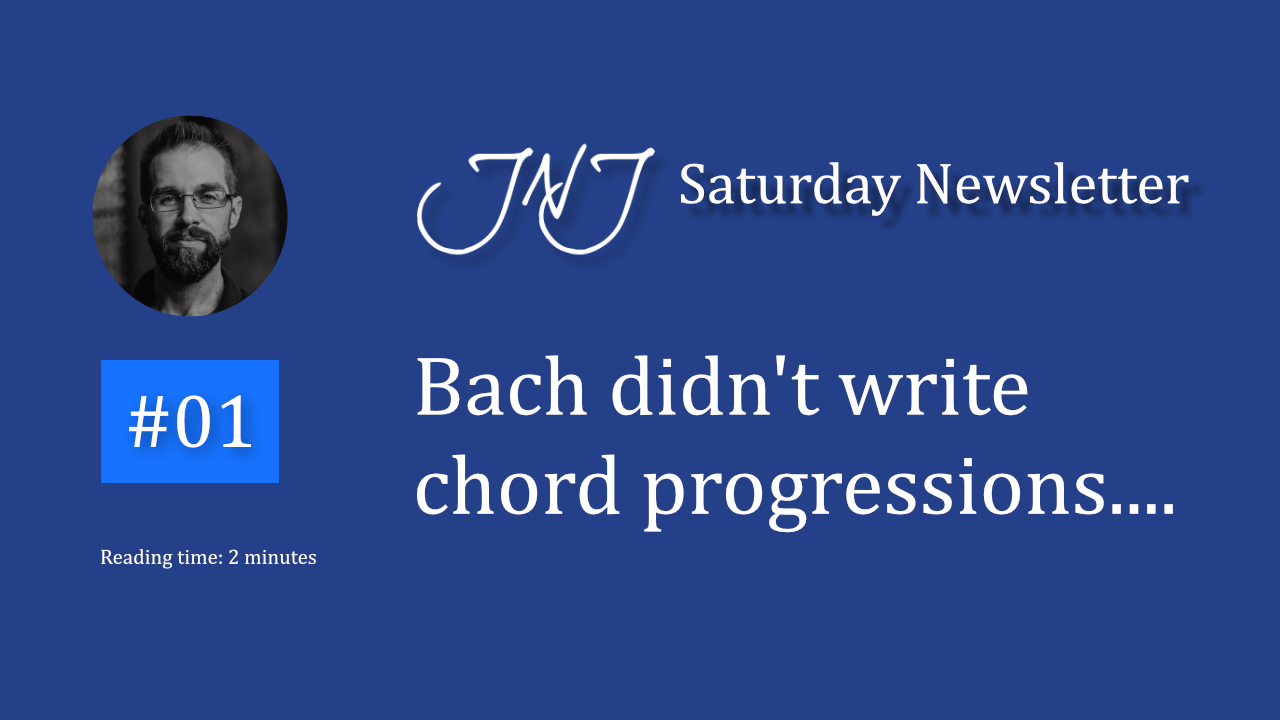Bach Didn't Write Chord Progressions...
Sep 30, 2023
I don’t think Bach ever sat down and thought “gee, I’ve got to figure out a slapping chord progression for this week’s cantata….”
In fact, I don’t think Bach really thought about chord progressions at all.
When writing for a choir, or chamber orchestra, Bach was responsible for not only writing something that would illicit an emotional response from the listener as a whole, but also for making sure each part sung or played by individual sections of the ensemble had a sense of melodic independence and could stand on its own.
He achieved this through part writing, and it’s exactly what I’m referencing when I say “think horizontally, not vertically.” Each line is a piece to the puzzle that makes up a chord, and even the inner voices that may be deemed “less important” have their own linear journey.
I know, you probably don’t want to write cantatas for choirs and chamber orchestras every Sunday, but the fact remains that this is still an incredibly effective way to approach harmony and “chord progressions.”
Part writing in the common practice period had lots of “rules”: don’t move in parallel octaves or 5ths, don’t double the 3rd of a chord, use contrary motion whenever possible, etc.
But it’s not the common practice period anymore. You can experiment with these guidelines and discard the ones you don’t find useful to suit your own taste.
Try out some of these techniques and bend them to fit whatever style of music you make.
Achieving “part independence” while also ending up with a satisfying result is easier said than done (like everything else really), but taking the time to learn and practice some of these methods will likely leave you with a foundation so solid it will beg you to vary and arrange it.
If you'd like to learn more about how I approach this more linear style of writing, you might be interested in my new course, Composition Concepts for Artists, which goes into much more detail about my own process of making music.
Whenever you're ready, here's how I can help you:
1. Composition Concepts for Artists - an in-depth look at the process of composition with step-by-step examples SHOWING how and WHY I make decisions. You'll learn to take an initial idea and DEVELOP it into a finished project.
2. Understanding Synthesis - learn to design your own sounds starting with the basics of subtractive synthesis and progressing to more advanced sound design with semi-modular and various forms of digital synthesis.
3. YouTube Membership - monthly livestreams featuring music making and sound design in real time. Q&As and exclusive videos only available to channel members.
4. One to One Coaching (coming soon) - work with me on YOUR own music. I'll help you take your track from idea to finished product, so you'll come out with a polished track or EP and any knowledge gained from walking through the process with me.
